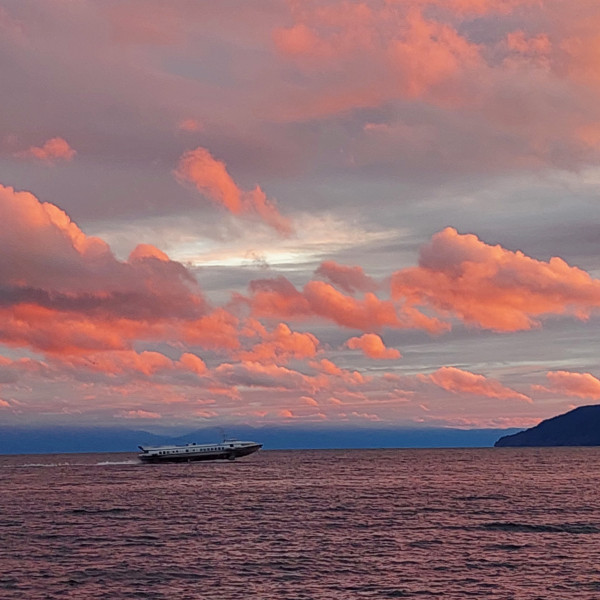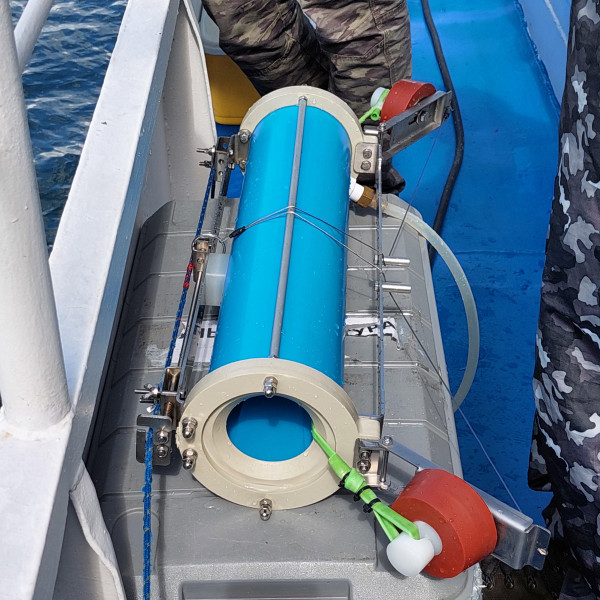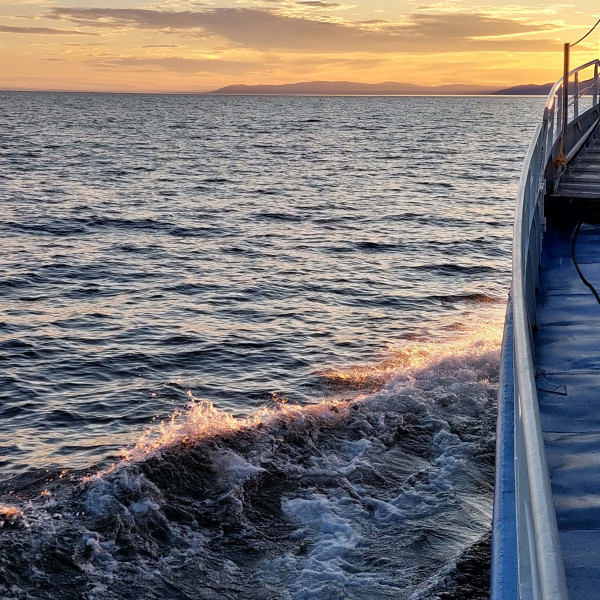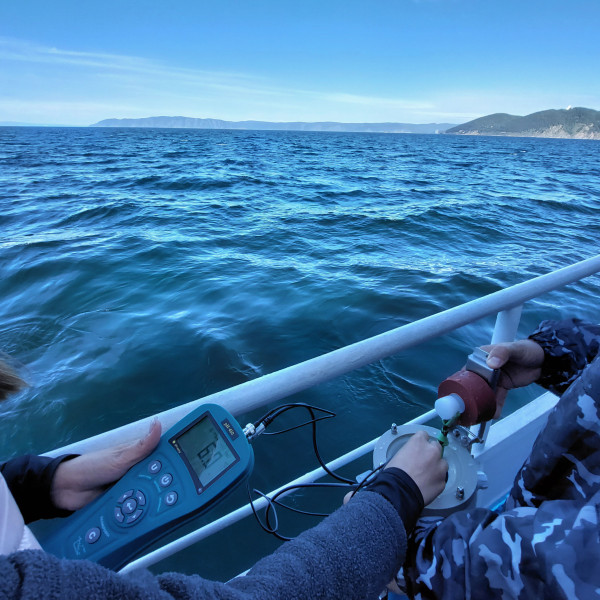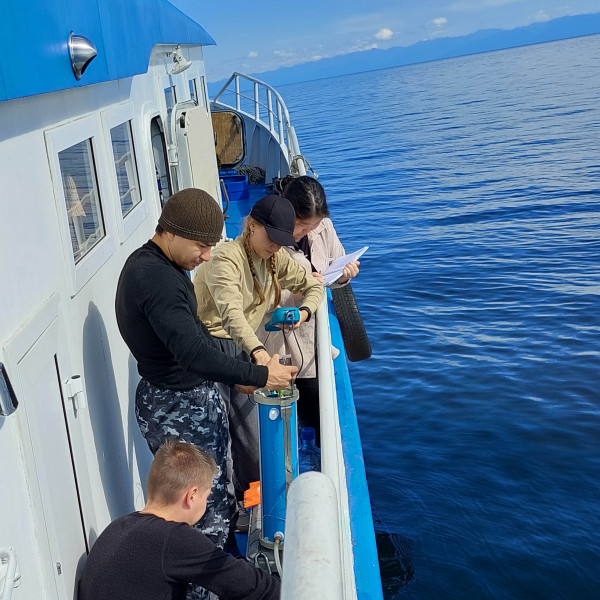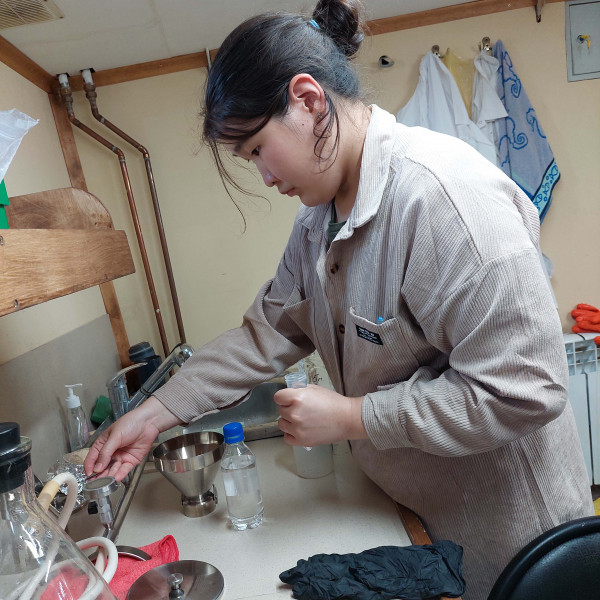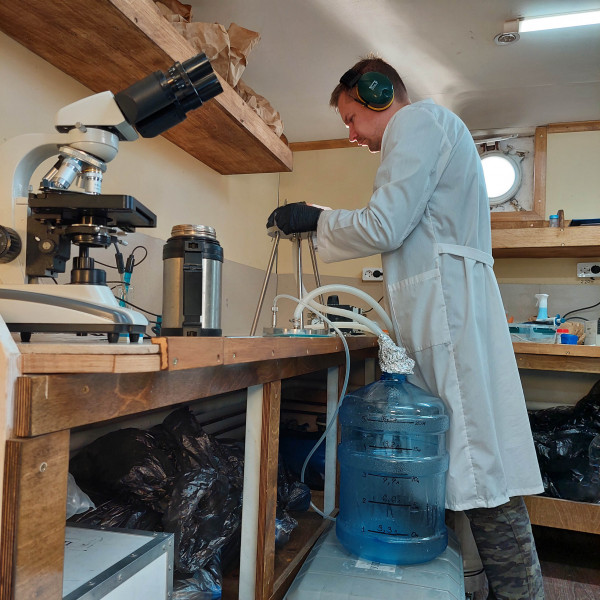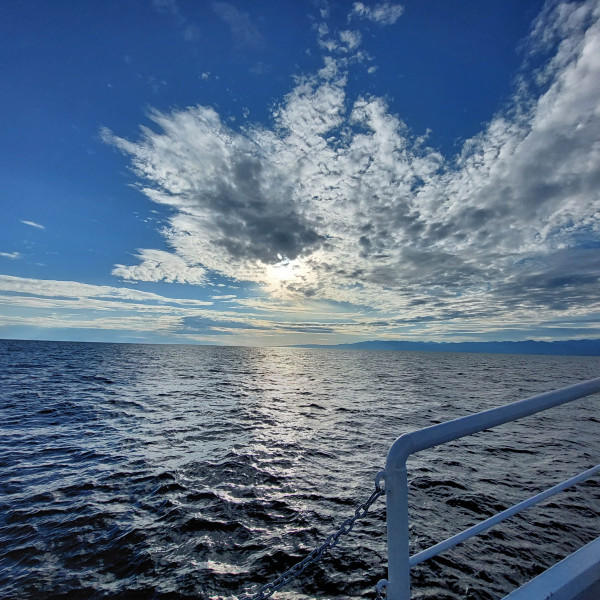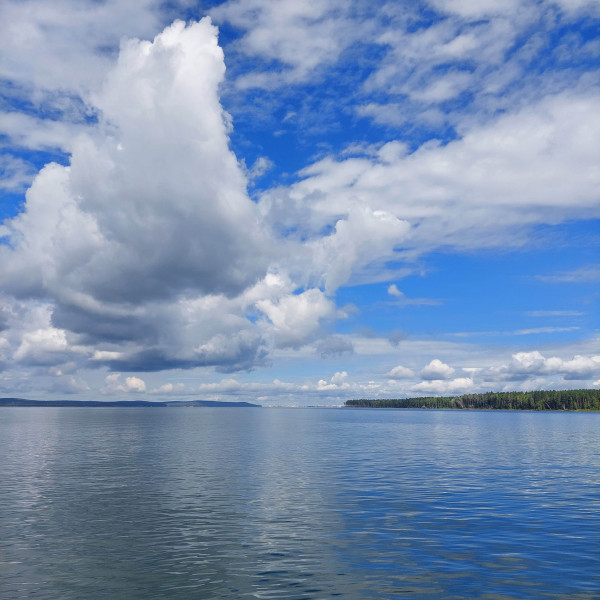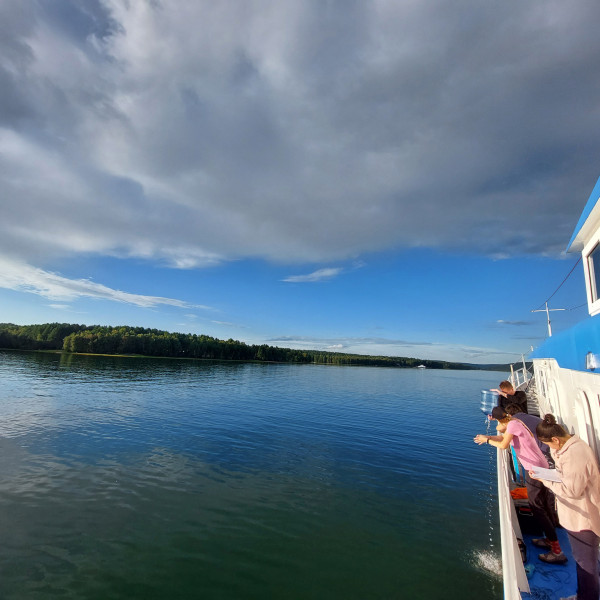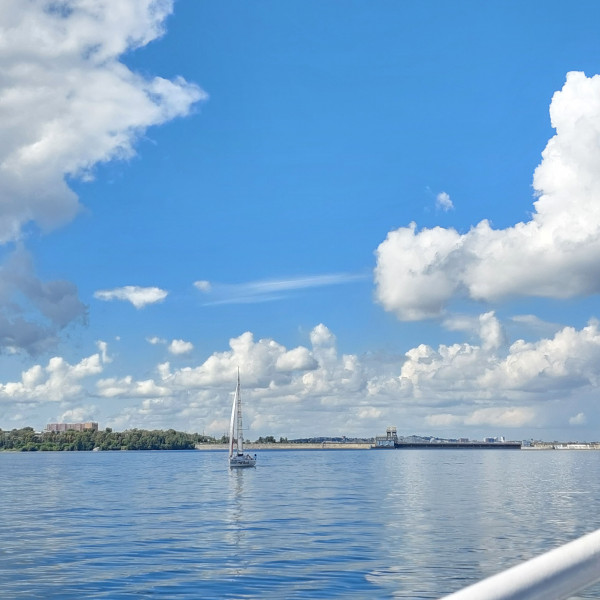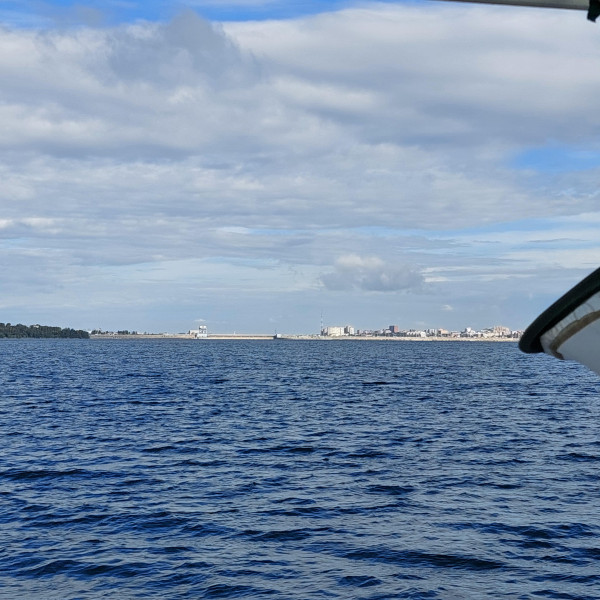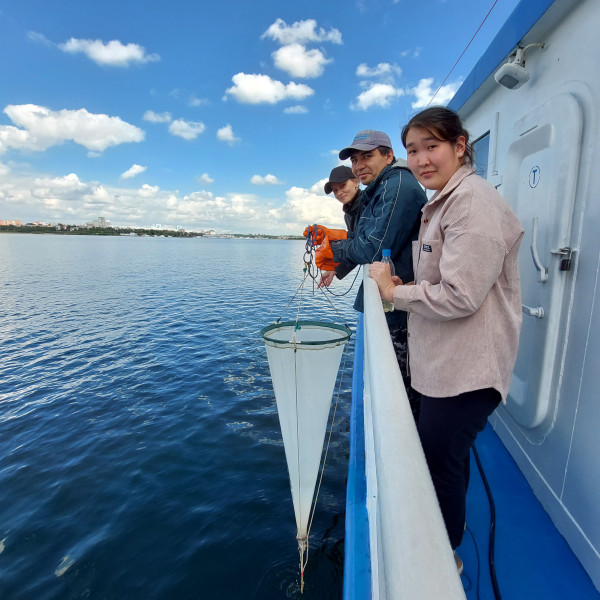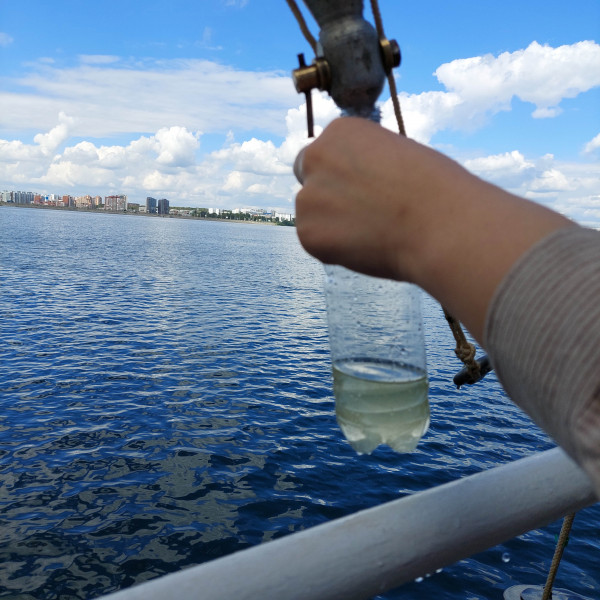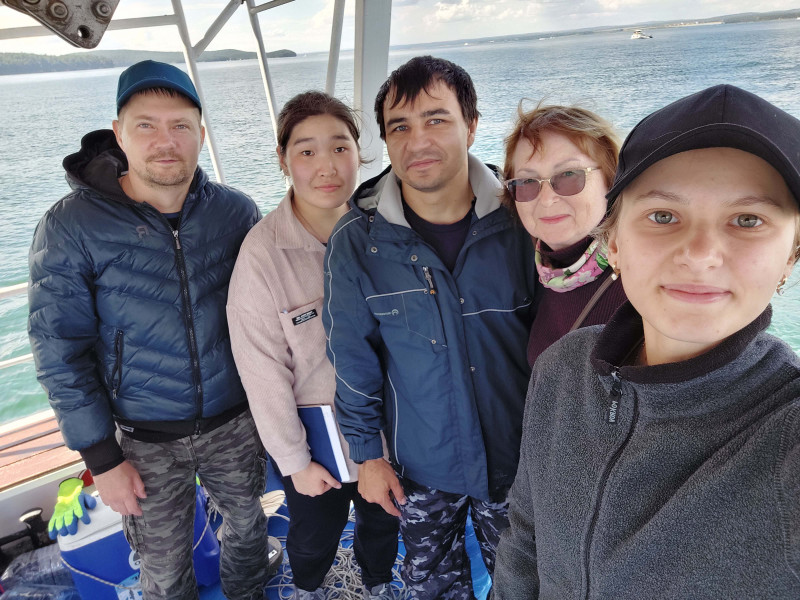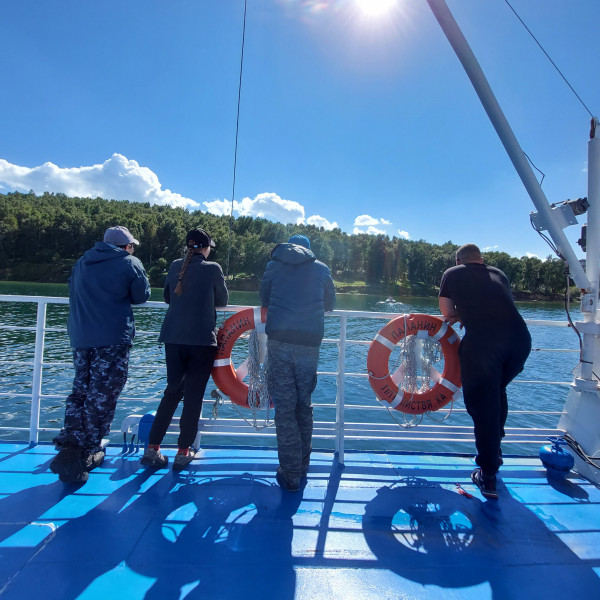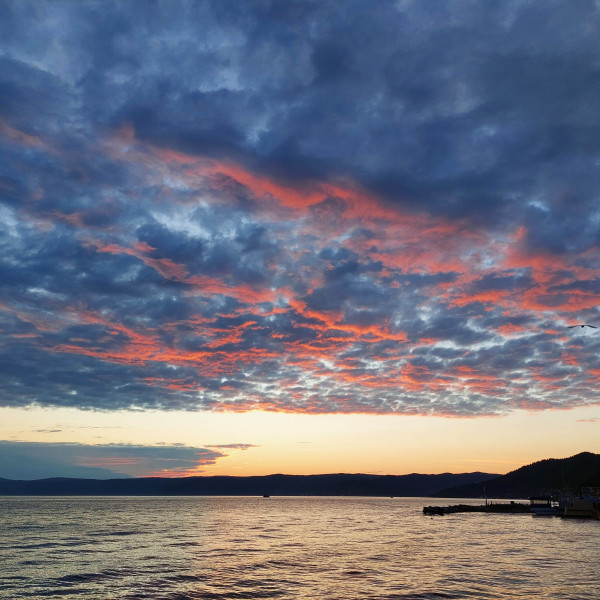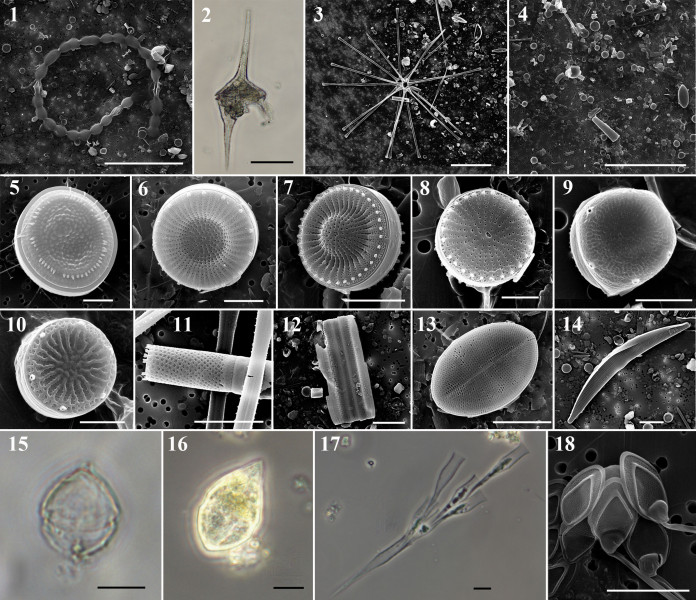Expedition on board the R/V “Papanin” on August 17-20, 2023
On August 17-20, 2023 a research expedition on board the R/V “Papanin” was conducted within the RNF project “Microeukaryote communities in the reservoirs of the Angara Cascade” (23-14-00028) (led by Ye.V. Likhoshway) in order to compare the diversity of microeukaryotes in Southern Baikal (SB) and Irkutsk Reservoir (IR) during summer. Water samples were collected from the photic layer (up to 25 m in SB and up to 5 or 10 m in IR) using a Niskin bathometer at 9 stations in SB (12 km from Kultuk, 3 km from Maritui, Maritui-Solzan, 3 km from Solzan, Tolsty-Snezhnaya, 3 km from Tankhoy, Kadilny-Mishikha, Listvyanka-Tankhoy, 3 km from Listvyanka) and at 8 stations of IR including bays (Kurma, Elovy, Ershovsky). Water transparency was determined with a Secchi disk. After determining the temperature, pH and redox potential (ROP) of water, samples were collected on filters for further examination by scanning electron microscopy (SEM), quantification analysis of phytoplankton composition by light microscopy (LM) and DNA isolation for sequencing to determine the taxonomic composition of microeukaryotes and with a Juday net for culturing microalgae species.
As a result of the expedition it was found that at the time of sampling in SB and IR, samples were more similar in terms of surface water layer temperature in August than during the previous expedition in June 2023. Thus, the surface water layer temperature in August in SB was 10.1-18.4 °C, in IR was 14.9-20.0 °C (3.6-5.0 °C and 6.0-12.7 °C in June). The pH values in August in the lake and in the reservoir were similar, in SB – 8.09-8.44, in IR – 7.96-8.28, in contrast to June, when water in IR was more alkaline (8.0 to 8.7) than in SB (7.0-8.0). Water transparency by a Secchi disk in SB decreased significantly in August (4.5-9.0 m) compared to June (10-22 m), in IR it also decreased from 3-5 m in June to 2.5-4.5 m in August.
The phytoplankton complex was represented by 6 divisions – Cyanophyta, Cryptophyta, Dinophyta, Chrysophyta, Bacillariophyta and Chlorophyta. . Preliminary data revealed that phytoplankton of Southern Baikal was mainly represented by blue-green, chrysophytic and green algae. Among the chrysophytic algae there was a diversity of algae of the genus Dinobryon. Diatom algae were not numerous and represented by a complex of species Aulacoseira baicalensis (Wisłouch) Simonsen, Aulacoseira granulata var. angustissima (O.Müller) Simonsen, Cyclostephanos dubius (Hustedt) Round. Lindavia baicalensis (Skvortsov & K.I.Meyer et al., Lindavia minuta (Skvortzov) T.Nakov et al., Nitzschiа graciliformis Langre-Bertalot, Sinonsen et al., Ulnaria acus (Kützing) Aboal.
Irkutsk reservoir generally had a similar species composition but according to electron microscopy data a large number of small centric diatoms were noted – Cyclostephanos makarovae (S.I.Genkal) K.Schultz, Thalassiosira pseudonana Hasle & Heimdal, Stephanodiscus minutulus (Kützing) Cleve & Möller, Discostella pseudostelligera (Hustedt) Houk & Klee, and Asterionella formosa Hassall, Aulacoseira granulata var. angustissima and a small number of Nitzschia graciliformis Lange-Bertalot & Simonsen. Of the blue-green species, the most frequently encountered were species Microcystis sp. and Dolichospermum (D. flos-aquae (Bornet & Flahault) P.Wacklin, L.Hoffmann & Komárek). Golden algae were represented by species of the genus Dinobryon, among which the most common was Dinobryon divergens O.E.Imhof и Dinobryon bavaricum Imhof, green algae were represented by such species as Ankistrodesmus arcuatus Korshikov, Monoraphidium contortum (Thuret) Komárková-Legnerová и Mucidosphaerium pulchellum (H.C.Wood) C.Bock, Proschold & Krienitz, as well as dinophyte species were in small quantities Ceratium hirundinella (O.F.Müller) Dujardin, Gyrodinium helveticum (Penard) Y.Takano & T. Horiguchi.
The phytoplankton of the bays was generally similar to that one of the central part of the reservoir, but was more abundant with more benthic species.
In general, it can be noted that phytoplankton in Southern Baikal was not as abundant as in Irkutsk Reservoir and its bays. The data are preliminary and further study of samples is conducted.
Samples will be further investigated by LM and SEM, DNA will be isolated from them, high-throughput sequencing and bioinformatic analysis of the resulting sequences will be performed to determine the taxonomic diversity of microeukaryotes.
Participants of the RNF project (Ye.V. Likhoshway, A.M. Marchenkov, I.S. Mikhailov, D.V. Khilkhalova, M.A. Nalimova) took part in the expedition; microscopic analysis was performed by A.D. Firsova and L.A. Titova.
The expedition participants thank the crew of the R/V “Papanin” for the precise and well-coordinated work.





